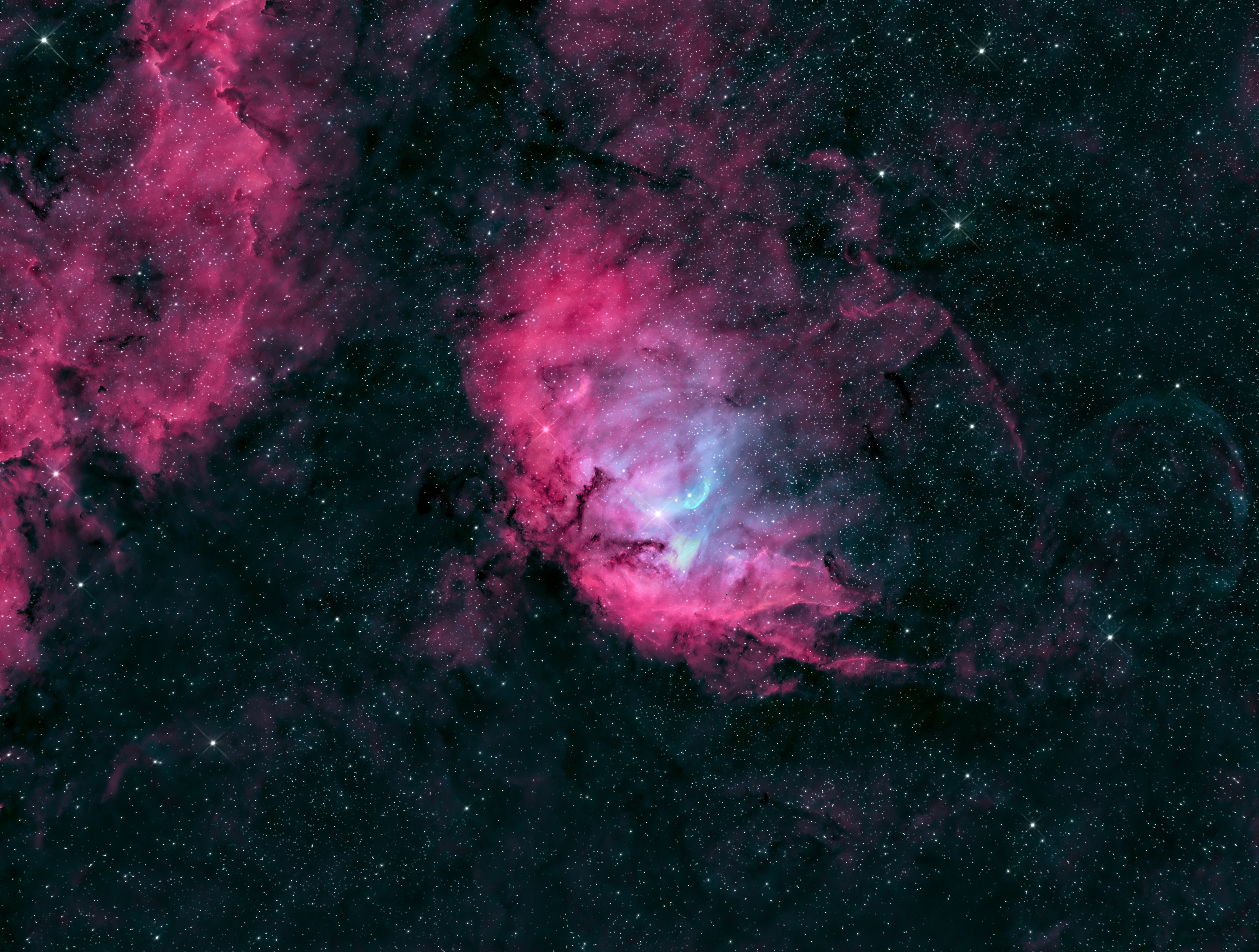
Move your mouse over the image above (on smartphones or tablets: touch it) to get a version with stars removed.
Sharpless 101, located near the right edge of this image, is an emission nebula located in the constellation Cygnus. The emission of the Tulip Nebula is excited by ultraviolet radiation of the hot young star HD 227018 in its center. It somewhat resembles a tulip seen from its side. Sh2-101 lies at a distance between 6,000 and 8,000 light years from Earth. An interesting feature of the Tulip Nebula is its close proximity (from our viewpoint on Earth) to the galactic X-ray source Cygnus X-1, which is one of the strongest X-ray sources known, and widely accepted to be a black hole. It was discovered in 1964.
The nebula radiates all of its light in isolated emission lines. The most prominent lines in the visible spectral range are Hα and [OIII], which were recorded exclusively to capture the image shown above. This is a "near-natural color" composition. The following mixture was used:
The stars were taken from the Hα image and are therefore colorless.
 Sh2-101 - Tulip Nebula, Wright-Newtonian CCD image,
Sh2-101 - Tulip Nebula, Wright-Newtonian CCD image,
 Sh2-101 - Tulip Nebula in Hα, which is part of this image.
Sh2-101 - Tulip Nebula in Hα, which is part of this image.
Exposure Data